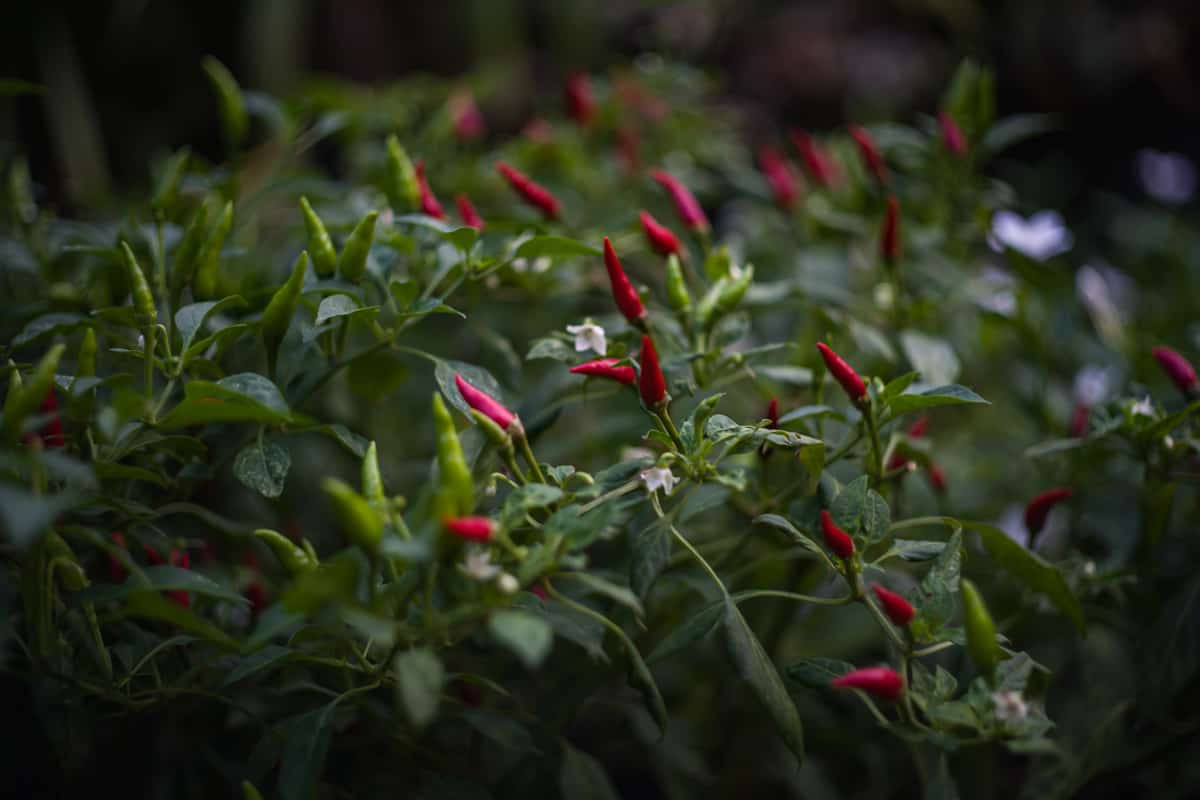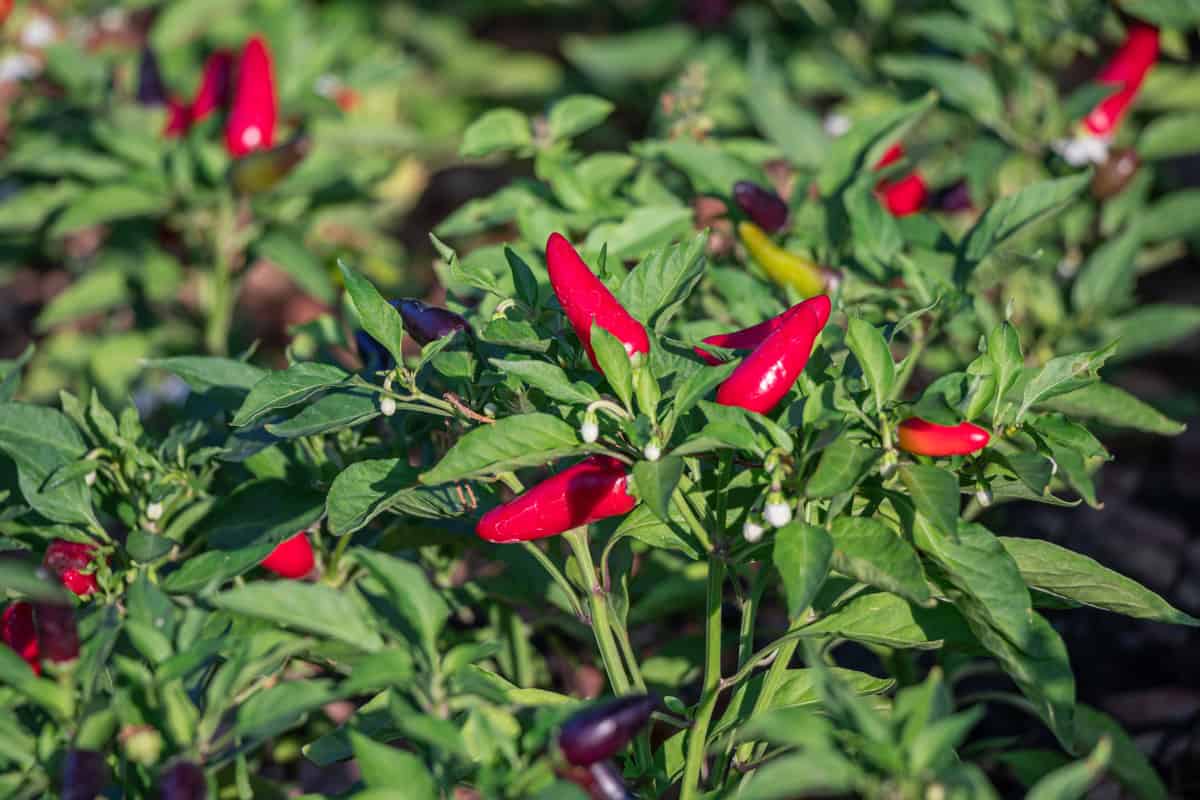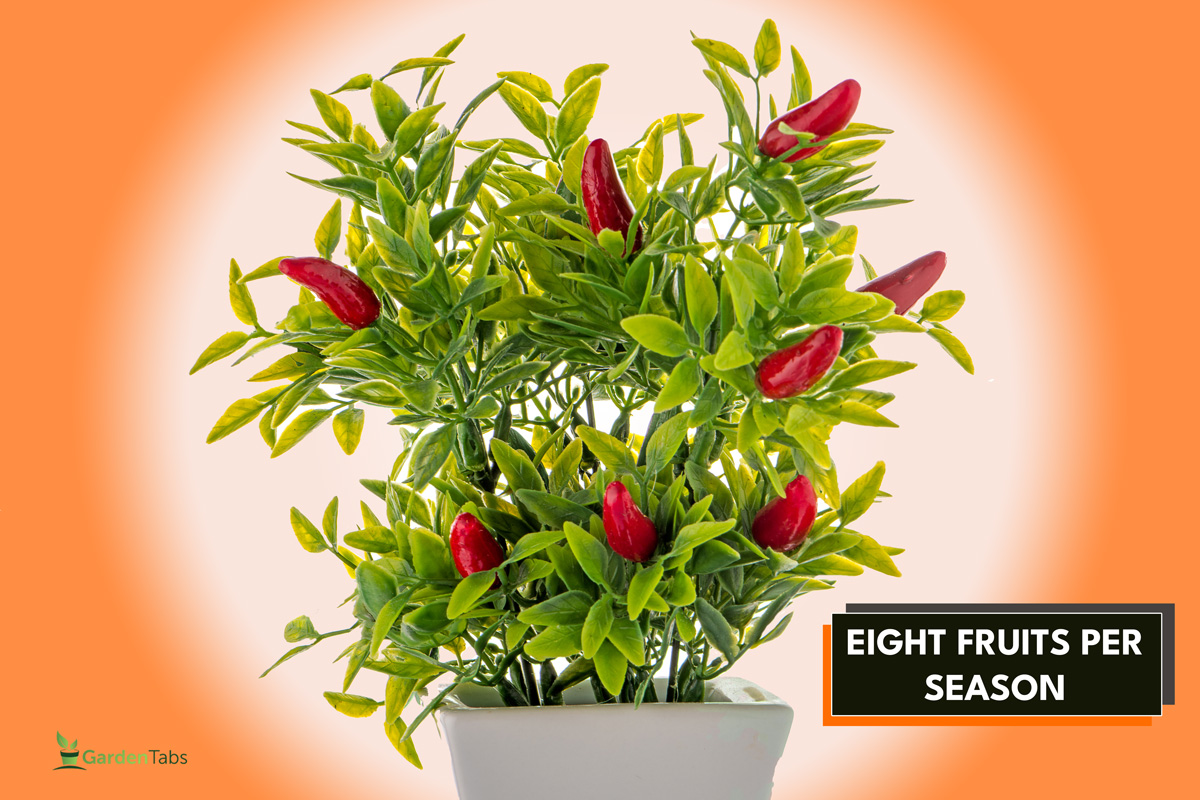Growing peppers in your garden can be very rewarding. Peppers can be an excellent addition to salads, dips, and home-cooked meals and are a good source of vitamins too! If you are curious whether peppers are self-pollinating, you just got lucky. We did the research and have the answer for you!
Peppers have what's often called "perfect flowers," meaning that every pepper flower carries both male and female reproductive organs. This allows them to self-pollinate and bear fruit. Although peppers can self-pollinate, wind and bees are essential to helping them yield healthy fruits.
Cross-pollination is also viable with peppers. Keep reading to learn more about peppers, why they still need pollinators, factors that prevent them from self-pollinating, and more!
Do Peppers Self-Pollinate?
Peppers have perfect flowers and are identified as complete or bisexual because they contain male (stamen) and female (pistil) parts, enabling them to produce fruit independently.
However, peppers still need bees and wind for pollination, primarily when they have flowers but don't bear fruit. In some cases, peppers need manual pollination to ensure that the male flower releases pollen and transmits it to the female part.
Do You Need To Plant More Than One Pepper?

Since peppers have complete flowers, you don't need to plant them in pairs for breeding and yielding fruit. One pepper plant can pollinate itself, but cross-pollination can still take place. Allogamy happens when a flower's stigma carries the pollen to another plant's flower.
Though you don't need to plant two peppers at the same time, planting two or more peppers means you can have a bunch of pepper flowers in one spot, which can attract bees and other pollinators to aid in pollination.
What Prevents Peppers From Pollinating?
Peppers, as self-pollinating vegetables, may sometimes experience non-production of fruit. Here are some of the factors that can keep pepper flowers from self-pollinating.
Climate
An immoderate climate can lead to the absence of breeding among pepper plants. Cold temperatures lower than 58 degrees Fahrenheit can delay the growth of the plant. Frost can damage the whole plant since peppers grow and thrive during warm weather.
However, exposure to high temperatures during the summer season can make peppers shed their flowers. When exposed to a daytime temperature beyond 90 degrees Fahrenheit, pepper flowers will fall off.
Protect your pepper plants from the sun's damaging rays by giving them shade. You can use a net to keep them cool on sunny days. Make sure to hydrate your plants by giving them sufficient water.
Click here to see this garden net on Amazon.
Moisture Level
The moisture level in the air can affect the pollination of pepper plants. Too much moisture or humidity can result in sticky pollen and prevent the release of pollen, while too little water in the air may make the pollen too dry.
Inadequate Pollinators
Bees are the most efficient pollinators, and their absence may result in a reduced fruit yield from your pepper plants. Other pollinators include birds, butterflies, moths, flies, wasps, and beetles.
To help maintain the presence of pollinators in your garden, avoid using pesticides and other chemicals that can kill pollinators.
Insufficient Wind

Wind aids in the pollination of pepper flowers by making them shake and sway. The wind stirs the male part of the blossom to unleash pollen. Placing your pepper plant outside for a bit can help stir up pollination.
For indoor pepper plants, pointing a fan at them may encourage pollination.
Do You Need To Hand Pollinate Peppers?
Healthy produce is a result of good pollination. To ensure your peppers will bear fruit, you can hand pollinate their flowers when there is a lack of pollinators, or your plants are under stress.
Hand pollination helps ensure that pepper flowers shake, releasing pollen from the male flower to the female flower.
Ways To Hand Pollinate Your Pepper Plants
Shake Your Pepper Plant
The easiest way to hand-pollinate your plant, imitating the work of the wind, is to give it a shake. Just be gentle and allow your flowers to sway.
Use A Toothpick Or Pencil
One inexpensive way to manually pollinate your pepper plants is to use a toothpick or pencil. Use one or the other to gently stroke the flower up and down. This practice will make the flower move, vibrate, and release pollen.
See these bamboo toothpicks on Amazon.
Brushing

You can use a soft-bristled toothbrush or a paintbrush to pollinate your pepper plants manually. Brush the flowers and carefully let them move to help release the pollen.
You can dip the bristles into the flowers if you want to cross-pollinate.
See this electric toothbrush on Amazon.
Use A Tuning Fork
Another way to hand-pollinate your peppers is to use a tuning fork. Gently hit the tuning fork to make it tremble, and then tap it against your pepper blossoms.
The vibrations produced are similar to that of a bee's wings and can result in pollen release.
Click here to see this tuning fork on Amazon.
Watch this video for more details on how to hand pollinate your pepper flowers by brushing them.
When Will Pepper Plants Produce Fruit?
The time for your pepper plants to bear fruit depends on their variety. Typically, pepper plants yield crops within 50 to 60 days of being transplanted to the garden.
Hot peppers take more time to bear fruit compared with bell peppers. Also, if you grow peppers from seeds, it can take longer for the plants to produce fruit. From planting the seed to harvesting, it could take up to 120 days.
How Much Fruit Can One Pepper Plant Produce?

Bell peppers can yield as many as eight fruits per season. With proper care, a pepper plant may produce even more!
What Factors Affect Fruit Production?

Looking after your pepper plants and taking good care of them contributes to how much fruit they can yield. Here are essential elements affecting their capacity to produce fruit.
Climate
Pepper plants thrive in warm temperatures and cannot withstand frigid weather. Bell peppers don't perish quickly, but during the winter, they can be damaged by frost and cold temperatures.
If kept warm, most bell pepper plants can survive for five years. A temperature below 55 to 60 degrees Fahrenheit at night will cause your plants to stop producing fruit. When germinating pepper seeds, the soil must have a temperature between 64 and 75 degrees Fahrenheit.
Prune The Plants
Pruning your pepper plants allows for sufficient airflow and can guard against disease. Trimming the lower leaves and branches of your pepper plants may result in reduced fruit production but larger, healthier, and more flavorful fruits.
In general, pruning may increase fruit production and help ward off illness in your plants.
Right Amount Of Water
The amount of water you give your pepper plants affects their production capacity. Dry soil and insufficient water can cause pepper flowers to die.
Too much water, on the other hand, may damage your plant's roots. To check whether your soil needs watering, touch it with your fingers. Go two to three inches deep. If the soil feels dry, you need to water it.
You should water your plants in the morning and water below the stems to keep the leaves from getting wet. Wet leaves can lead to mold and disease in pepper plants.
Fertilizer
Add decayed organic material to your soil before planting peppers. Fertilizers give your pepper plants the proper nutrients they need to grow healthy. You can damage your plants by giving them too much fertilizer, so be mindful of this.
Click here to see this organic fertilizer on Amazon.
Support Tools
For pepper plants that grow particularly tall, you may need to place support cages in your garden. Support cages provide space and encourage plants to grow upright.
The supports will prevent the plant's fruits and vines from reaching the ground, reducing the risk of decaying fruit and disease.
See these plant support cages on Amazon.
Final Thoughts
Pepper plants are vegetables you can quickly grow and look after in your garden. They are self-pollinating and take only a few months to grow and yield fruit.
The essential part of growing peppers is knowing how to help the plants yield a fruitful harvest. With the information provided in this post, you can now start planting and growing your own pepper plants!
Before you go, check out these related articles:






